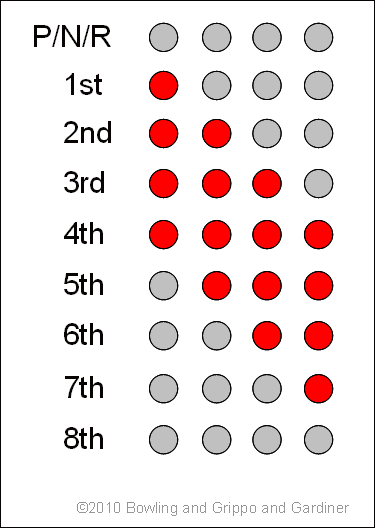Click on our menu buttons immediately below to find MegaSquirt® information quickly:
MicroSquirt® Module
V1/V2 MicroSquirt®
Important
Safety
Information
MicroSquirt®
Support
Forum
- MShift™ TCU
- MShift™ Intro
- GPIO Build Guide for 4L60E
- Base circuits
- GPO1, GPO2, GPO3,
GPO4 (gear LEDs)
- VB1, VB2, VB3, VB4
- PWM1, PWM2, PWM3, PWM4
- GPI1, GPI2, GPI5
(2/4WD, Input2, downshift)
- GPI3 (Temperature)
- GPI4 (Brake sense)
- EGT1, EGT2, EGT3,
EGT4 (non-CAN Load,
line pressure, Input3,
Input1)
- VR1 (Vehicle
Speed Sensor)
- VR2 (Upshift button)
- Finishing Touches
- Testing your
GPIO Board
- External Wiring Guide for 4L60E
- Current Release Code
- User Settings
- βeta Code
- Code Archives
- Purchase a
GPIO kit
- Working with the Shift Table
- Serial
Connection
Troubleshooting
- CANbus
Set-Up
- Solving VSS
Issues
- Ports, pins, circuits, connections
- MShift™ Discussion
Forums
- Misc. MShift™
Topics
- MShift™ sitemap
- Template Project Code
- GPIO Board Intro
- MShift™/GPIO
Support Forum
|

MegaShift™ V2.204 Code
This 2.204 code is an old release code. The current release version is here.
The MegaShift™ V2.204 S19 file is here:
Note: When in bootloader mode, the GPIO allows a full 12V to flow in the TCC and Output3 (aka. TCC, SolC) circuits. If your set-up depends on PWM to limit the current in these solenoids, you MUST pull the 5 Amp fuse to these solenoids (shown in this wiring diagram) before entering bootloader mode to load new code. The 4L60E does not need to have the fuse pulled in bootloader mode.
The accompanying INI file is here:
This INI fully supports the 'context menu help' feature added in TunerStudioMS versions 1.30 and up.
The instructions for loading MShift™ code to your GPIO controller are here. Click this link.
The tuning software guide to all the tuning parameters in the V2.204 code is here: V22tune.html
|
Dependencies:
MShift™ v2.204 code requires 2.905 MS-II™/MicroSquirt®/Sequencer™ code (or higher) for CAN compatibility (3.5xx code or higher will also work).
You will also require TunerStudio 999.8e (or higher) for this MShift™ code. You can get it here:
|
Compared to the V1.100 code, this MShift™ code adds:
Loading Code on Your MShift™ Controller
To use Eric Falgren's Windows downloader.exe:
- Power down the MShift™/GPIO Controller,
- Put the boot jumper on both pins of the header marked JP5 (for "bootloader") near the serial plug on the GPIO board,
- Power up the MShift™/GPIO Controller by connecting the power supply ground on one of the Ampseal pins 18, 19, 20 (through the appropriate lead). Then apply 12 volts (nominal, 9V to 15V is okay) to Ampseal pin 1.
Note: When in bootloader mode, the GPIO allows a full 12V to flow in the TCC and Output3 (aka. SolC, 3/2sol) circuits. If your set-up depends on PWM to limit the current in these solenoids, you MUST pull the 5 Amp fuse to these solenoids (shown in this wiring diagram) before entering bootloader mode to load new code. The 4L60E does not need to have the fuse pulled in bootloader mode.
- Start the Windows downloader program (get it here), and select the appropriate COM port number for your serial connection (if you don't know your serial COM port, run the portCheck program).
See this link for downloading using other platforms than Windows..
- Select the appropriate .S19 file, and the downloader will read, write and verify the code to the processor in about 10 seconds or so.
- The process ends with a message like "Verification succeeded, XXX records total (4 skipped)." (where XXX is a large number that varies from one code version to the next),
- Shut down the downloader program,
- Remove power from the MShift™/GPIO Controller,
- Remove the boot jumper (or put it on just one pin of the boot header for storage),
- Start the tuning software (TunerStudioMS) and set the COM port and speed if necessary.
- You will need to download and activate the latest INI file. Under the 'File/Project/Project Properties' of TunerStudio, click on the 'Other' check box.
- Click the 'Browse' button.
- Navigate to the INI file you downloaded from the link above (www.msgpio.com/manuals/mshift/V2code.html).
- Click on the appropriate INI file you downloaded from the code page (www.msgpio.com/manuals/mshift/V2code.html) to activate it.
- To set up a CAN pass-through connection with TunerStudioMS, see this video: CAN set-up video (22 MBytes)
Old Code/INI files are here:
INI files
Code files (*.S19)
Linux/OSX Downloader: We do not have a downloader program for Linux/OSX. However, others may offer a linux downloader application for MS-II™ controllers, such as this. Any downloader software and procedures that work for MS-II™ controllers with B&G code will work for the GPIO - the serial communications, memory, and bootloader code are exactly the same as B&G V2.9xx code for loading code. Like MS-II™ controllers, the GPIO controller supports all of the MS-II™ serial interface commands, including the 'Q' command. For example, in response to a 'Q' sent from the PC, the code version 2.204 returns:
- '4d 53 68 69 66 74 20 32 2e 31 31 31 20 20 20 20 20 20 20 0' in hex,
- '77 83 104 105 102 116 32 50 46 49 49 49 32 32 32 32 32 32 32 0' in decimal,
- 'MShift 2.204 ' in ASCII.
You can get these values returned in TunerStudioMS by using the 'Communications/Mini-Terminal' function by typing a Q into the upper text box, and looking for the returned value in the lower text box. 'S' will return the signature; '** V2.204 MegaShift by B&G **' in this case.
If you have trouble with any downloader other than the Windows ms2dl200 downloader by Eric Fahlgren, please contact your downloader's developer for information and assistance.
A few users have reported success using wine (www.winehq.org) under linux to run the Windows ms2dl200 downloader, but we haven't tried it. You might want to see if it works for you.
MegaSquirt® and MicroSquirt® controllers are experimental devices intended for educational purposes.
MegaSquirt® and MicroSquirt® controllers are not for sale or use on pollution controlled vehicles. Check the laws that apply in your locality to determine if using a MegaSquirt® or MicroSquirt® controller is legal for your application.
© 2010, 2012 Bruce Bowling and Al Grippo. All rights reserved. MegaSquirt® and MicroSquirt® are registered trademarks. This document is solely for the support of MegaSquirt® boards from Bowling and Grippo.



